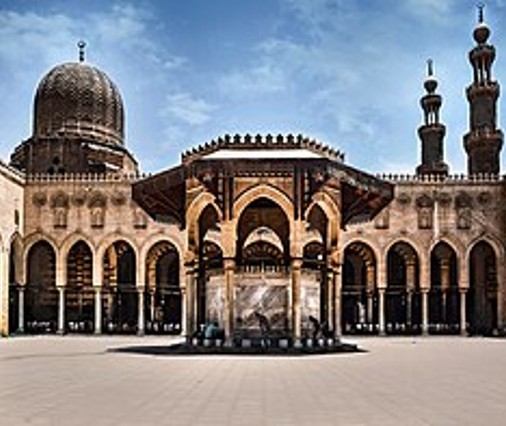Informations du cours

Course Plan: History of Architecture in the Muslim World
Level: First-year Architecture Students
Duration: 12 sessions
General Objectives
- Develop a historical understanding of architecture in the Muslim world through major dynasties.
- Understand the evolution of architectural forms and styles in different geographical contexts.
- Acquire technical and stylistic vocabulary related to Muslim architecture.
Session 1: General Introduction
- Definition and significance of architectural history.
- The impact of political, economic, and cultural contexts on architecture.
- Overview of major periods and dynasties covered in the course.
Session 2: The Rise of Islam and the Arabian Peninsula Context
- Socio-economic and cultural context before Islam.
- Influence of pre-Islamic architectural traditions.
- Early places of worship and the foundations of Islamic urbanism.
Session 3: Early Muslim Architecture (610-661)
- Architecture under Prophet Muhammad and the first caliphs.
- The Kaaba and the Prophet’s Mosque in Medina.
- Influence of local traditions (Byzantine, Persian, Arab).
- Architecture under Kalifs erachidun
Session 4: Umayyad Architecture (661-750)
- Introduction to the Umayyads and their territorial influence.
- Key mosques: Damascus, Cordoba.
- Desert palaces and architectural innovations.
Session 5: Abbasid Architecture (750-945)
- Urban planning and the foundation of Baghdad and Samarra.
- Evolution of architectural and ornamental techniques.
- Persian and Mesopotamian influences on Abbasid structures.
Session 6: The Fragmentation of the Abbasid Dynasty and the Rise of Local and Unifying Dynasties
- Overview of local and centralizing dynasties.
- Regional developments in Muslim architecture.
Session 7: Architecture of the Unifying Dynasties in the West: Fatimids, Almohads, Almoravids
- Stylistic characteristics and innovations.
- Notable constructions: Al-Azhar (Fatimid), Koutoubia (Almohad).
- Urbanism and its impact on cities in the Maghreb and Spain.
Session 8: Architecture of Local Dynasties in the West: Umayyads of Spain, Idrisids, Marinids, Aghlabids, and Hafsids
- Differences and similarities among these dynasties.
- Study of major monuments: Cordoba Mosque, Qal’at Beni Hammad.
- Andalusian influence on the Maghreb and vice versa.
Session 9: Architecture of Local Dynasties in the East: Ayyubids, Mamluks, Safavids, Mughals, and Ottomans
- Development of architectural forms and ornamentation.
- Notable structures: Cairo Citadel (Ayyubid), Taj Mahal (Mughal).
- Influence of the Ottoman Empire on the Muslim world.
Session 10: Architecture of Major Muslim Dynasties in Algeria
- Rustamids, Zirids, and Zianids.
- Ottoman influence on Algerian architecture.
- Case studies: Mosques and Ottoman palaces in Algeria.
Session 11: Comparative Approach and Evolution of Architectural Forms
- Comparison of styles across different dynasties.
- The evolution of construction techniques and materials.
- Summary of cultural influences and architectural exchanges.
Session 12: Summary and Review
- Discussion on the architectural heritage of the Muslim world.
- Influence of this architecture on modern and contemporary periods.
- Evaluation and research perspectives for further study.
- Enseignant: FEZZAI SOUFIANE
